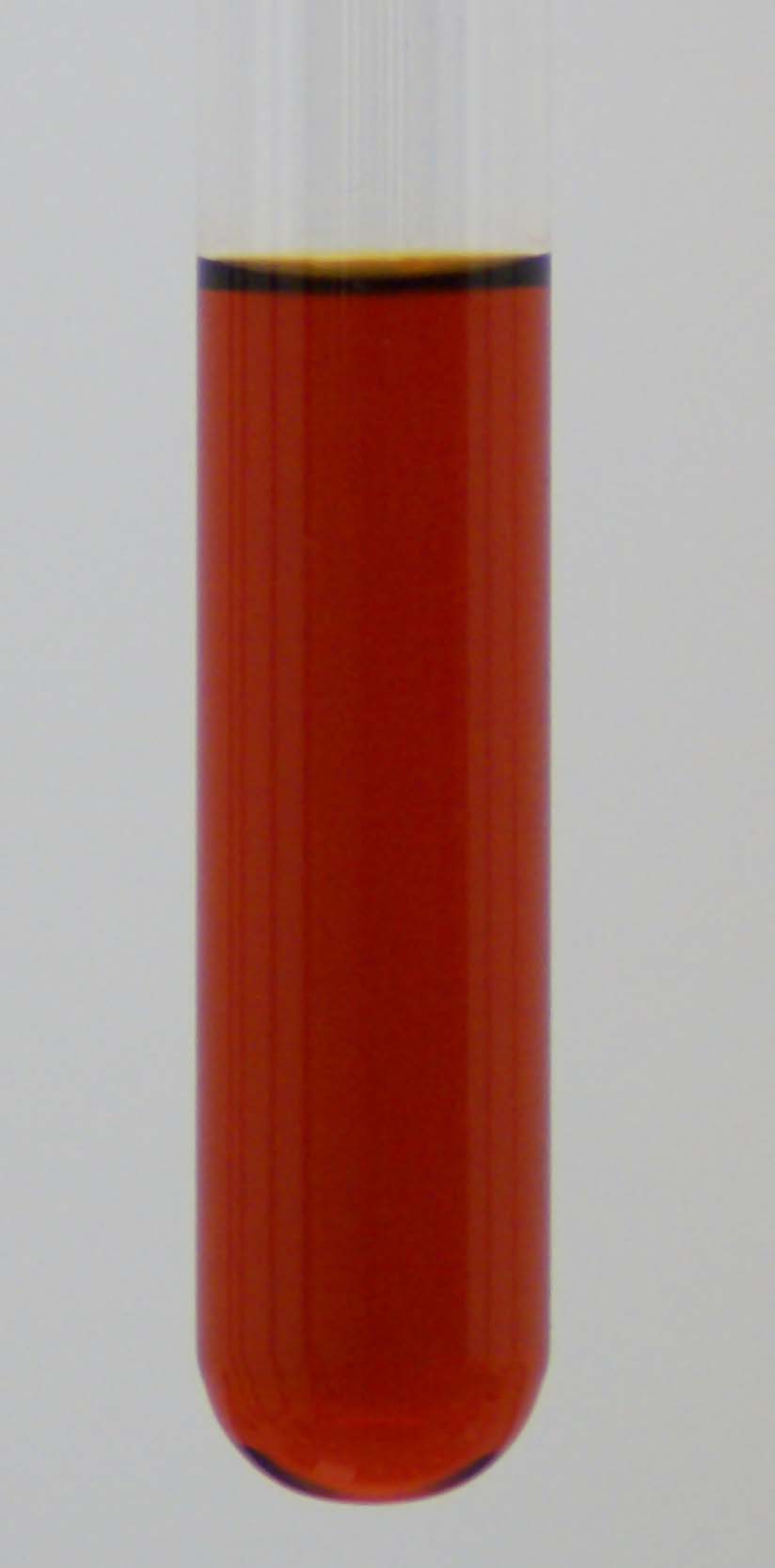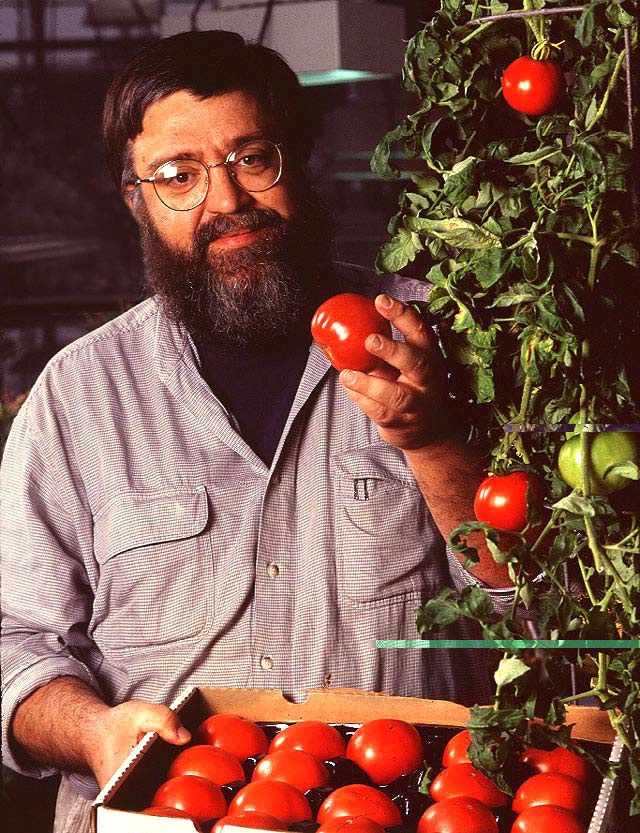|
Peter Bramley (biochemist)
Peter M. Bramley is a British biochemist and emeritus professor of biochemistry at Royal Holloway, University of London, where he was the Head of the School of Biological Sciences from 2006 to 2011. His research focuses on the biosynthesis of carotenoids in plants and microorganisms. Bramley was educated at Long Eaton Grammar School and the University College of Wales Aberystwyth, where he graduated with a BSc in biochemistry (1969) and later obtained a PhD. He was appointed lecturer in biochemistry at Royal Holloway in 1972, professor of biochemistry in 1996, and remained there throughout his career. For his PhD he studied carotenoid formation in mutants of Phycomyces blakesleeanus, developing cell extracts for in vitro assays of enzyme activities. These cell free systems facilitated investigations on the mode of action of bleaching herbicides that inhibit carotenoid formation. Since the 1990s he has focused on the biosynthesis of carotenoids and other isoprenoids in higher pl ... [...More Info...] [...Related Items...] OR: [Wikipedia] [Google] [Baidu] |
Royal Holloway, University Of London
Royal Holloway, University of London (RH), formally incorporated as Royal Holloway and Bedford New College, is a public university, public research university and a constituent college, member institution of the federal University of London. It has six schools, 21 academic departments and approximately 10,500 undergraduate and postgraduate students from more than 100 countries. The campus is located west of Egham, Surrey, from central London. The Egham campus was founded in 1879 by the Victorian entrepreneur and philanthropist Thomas Holloway. Royal Holloway College was officially opened in 1886 by Queen Victoria as an Single-sex education, all-women college. It became a member of the University of London in 1900. In 1945, the college admitted male postgraduate students, and in 1965, around 100 of the first male undergraduates. In 1985, Royal Holloway merged with Bedford College (London), Bedford College (another former all-women's college in London). The merged college was nam ... [...More Info...] [...Related Items...] OR: [Wikipedia] [Google] [Baidu] |
Lycopene
Lycopene is an organic compound classified as a tetraterpene and a carotene. Lycopene (from the Neo-Latin '' Lycopersicon'', the name of a former tomato genus) is a bright red carotenoid hydrocarbon found in tomatoes and other red fruits and vegetables. Occurrence Aside from tomatoes or tomato products like ketchup, it is found in watermelons, grapefruits, red guavas, and baked beans. It has no vitamin A activity. In plants, algae, and other photosynthetic organisms, lycopene is an intermediate in the biosynthesis of many carotenoids, including beta-carotene, which is responsible for yellow, orange, or red pigmentation, photosynthesis, and photoprotection. Like all carotenoids, lycopene is a tetraterpene. It is soluble in fat, but insoluble in water. Eleven conjugated double bonds give lycopene its deep red color. Owing to the strong color, lycopene is used as a food coloring (registered as E160d) and is approved for use in the US, Australia and New Zealand (register ... [...More Info...] [...Related Items...] OR: [Wikipedia] [Google] [Baidu] |
Living People
Purpose: Because living persons may suffer personal harm from inappropriate information, we should watch their articles carefully. By adding an article to this category, it marks them with a notice about sources whenever someone tries to edit them, to remind them of WP:BLP (biographies of living persons) policy that these articles must maintain a neutral point of view, maintain factual accuracy, and be properly sourced. Recent changes to these articles are listed on Special:RecentChangesLinked/Living people. Organization: This category should not be sub-categorized. Entries are generally sorted by family name In many societies, a surname, family name, or last name is the mostly hereditary portion of one's personal name that indicates one's family. It is typically combined with a given name to form the full name of a person, although several give .... Maintenance: Individuals of advanced age (over 90), for whom there has been no new documentation in the last ten ... [...More Info...] [...Related Items...] OR: [Wikipedia] [Google] [Baidu] |
1948 Births
Events January * January 1 ** The General Agreement on Tariffs and Trade (GATT) is inaugurated. ** The current Constitutions of Constitution of Italy, Italy and of Constitution of New Jersey, New Jersey (both later subject to amendment) go into effect. ** The railways of Britain are nationalized, to form British Railways. * January 4 – British rule in Burma, Burma gains its independence from the United Kingdom, becoming an independent republic, named the 'Post-independence Burma (1948–1962), Union of Burma', with Sao Shwe Thaik as its first President and U Nu its first Prime Minister. * January 5 – In the United States: ** Warner Brothers shows the first color newsreel (''Tournament of Roses Parade'' and the ''Rose Bowl Game''). ** The first Kinsey Reports, Kinsey Report, ''Sexual Behavior in the Human Male'', is published. * January 7 – Mantell UFO incident: Kentucky Air National Guard pilot Thomas Mantell crashes while in pursuit of an unidentified fl ... [...More Info...] [...Related Items...] OR: [Wikipedia] [Google] [Baidu] |
British Biochemists
British may refer to: Peoples, culture, and language * British people, nationals or natives of the United Kingdom, British Overseas Territories and Crown Dependencies. * British national identity, the characteristics of British people and culture * British English, the English language as spoken and written in United Kingdom of Great Britain and Northern Ireland and, more broadly, throughout the British Isles * Celtic Britons, an ancient ethno-linguistic group * Brittonic languages, a branch of the Insular Celtic language family (formerly called British) ** Common Brittonic, an ancient language Other uses *People or things associated with: ** Great Britain, an island ** British Isles, an island group ** United Kingdom, a sovereign state ** British Empire, a historical global colonial empire ** Kingdom of Great Britain (1707–1800) ** United Kingdom of Great Britain and Ireland (1801–1922) * British Raj, colonial India under the British Empire * British Hong Kong, colonial H ... [...More Info...] [...Related Items...] OR: [Wikipedia] [Google] [Baidu] |
Google Scholar
Google Scholar is a freely accessible web search engine that indexes the full text or metadata of Academic publishing, scholarly literature across an array of publishing formats and disciplines. Released in Beta release, beta in November 2004, the Google Scholar index includes peer-reviewed online academic journals and books, conference papers, theses and dissertations, preprints, Abstract (summary), abstracts, technical reports, and other scholarly literature, including Legal opinion, court opinions and patents. Google Scholar uses a web crawler, or web robot, to identify files for inclusion in the search results. For content to be indexed in Google Scholar, it must meet certain specified criteria. An earlier statistical estimate published in PLOS One using a mark and recapture method estimated approximately 79–90% coverage of all articles published in English with an estimate of 100 million.'' Trend Watch'' (2014) Nature (journal), Nature 509(7501), 405 – discussing Madian K ... [...More Info...] [...Related Items...] OR: [Wikipedia] [Google] [Baidu] |
Vitamin A Deficiency
Vitamin A deficiency (VAD) or hypovitaminosis A is a lack of vitamin A in blood and tissues. It is common in poorer countries, especially among children and women of reproductive age, but is rarely seen in more developed countries. Vitamin A plays a major role in phototransduction, so this deficiency impairs vision, often presenting with nyctalopia (night blindness). In more severe VAD cases, it can progress to xerophthalmia, keratomalacia, and complete blindness. Vitamin A deficiency is the leading cause of preventable childhood blindness worldwide and is a major cause of childhood mortality. Each year, approximately 250,000 to 500,000 malnourished children in the developing world go blind from a VAD, with about half of whom dying within a year of losing their sight. Addressing VAD has been a critical focus of global health initiatives, including Sustainable Development Goal 2: to end hunger, achieve food security and improved nutrition and promote sustainable agriculture. ... [...More Info...] [...Related Items...] OR: [Wikipedia] [Google] [Baidu] |
Golden Rice
Golden rice is a variety of rice ('' Oryza sativa'') produced through genetic engineering to biosynthesize beta-carotene, a precursor of vitamin A, in the edible parts of the rice. It is intended to produce a fortified food to be grown and consumed in areas with a shortage of dietary vitamin A. Genetically modified golden rice can produce up to 23 times as much beta-carotene as the original golden rice. Golden rice is generally considered to be safe, with the FDA, Health Canada, International Rice Research Institute and the Bill & Melinda Gates Foundation supporting its use. It has been met with significant opposition from some environmental and anti-globalisation activists, alleging risks regarding biodiversity and expressing concerns about unforeseen health effects and socioeconomic impacts. In 2016, 107 Nobel laureates wrote an open letter to Greenpeace and its supporters, asking them to abandon their campaign against genetically modified crops in general and golden ... [...More Info...] [...Related Items...] OR: [Wikipedia] [Google] [Baidu] |
Long Eaton Grammar School
Long may refer to: Measurement * Long, characteristic of something of great duration * Long, characteristic of something of great length * Longitude (abbreviation: long.), a geographic coordinate * Longa (music), note value in early music mensural notation Places Asia * Long District, Laos * Long District, Phrae, Thailand * Longjiang (other) or River Long (lit. "dragon river"), one of several rivers in China * Yangtze River or Changjiang (lit. "Long River"), China Elsewhere * Long, Somme, France People * Long (Chinese surname) * Long (Western surname) Fictional characters * Long (''Bloody Roar''), in the video game series * Long, Aeon of Permanence in Honkai: Star Rail Sports * Long, a fielding term in cricket * Long, in tennis and similar games, beyond the service line during a serve and beyond the baseline during play Other uses * , a U.S. Navy ship name * Long (finance), a position in finance, especially stock markets * Lòng, name for a laneway in Shangha ... [...More Info...] [...Related Items...] OR: [Wikipedia] [Google] [Baidu] |
GM Tomato
A genetically modified tomato, or transgenic tomato, is a tomato that has had its genes modified, using genetic engineering. The first trial genetically modified food was a tomato engineered to have a longer shelf life (the Flavr Savr), which was on the market briefly beginning on May 21, 1994 in the USA. The first direct-consumption tomato was approved in Japan in 2021. Primary work is focused on developing tomatoes with new traits, such as increased resistance to pests or environmental stresses. Other projects aim to enrich tomatoes with substances that may offer health benefits or be more nutritious. As well as aiming to produce novel crops, scientists produce genetically modified tomatoes to understand the function of genes naturally present in tomatoes. ''Agrobacterium''-mediated genetic engineering techniques were developed in the late 1980s that could successfully transfer genetic material into the nuclear genome of tomatoes. Genetic material can also be inserted into a to ... [...More Info...] [...Related Items...] OR: [Wikipedia] [Google] [Baidu] |
Isoprenoids
The terpenoids, also known as isoprenoids, are a class of naturally occurring organic chemicals derived from the 5-carbon compound isoprene and its derivatives called terpenes, diterpenes, etc. While sometimes used interchangeably with "terpenes", terpenoids contain additional functional groups, usually containing oxygen. When combined with the hydrocarbon terpenes, terpenoids comprise about 80,000 compounds. They are the largest class of plant secondary metabolites, representing about 60% of known natural products. Many terpenoids have substantial pharmacological bioactivity and are therefore of interest to medicinal chemists. Plant terpenoids are used for their aromatic qualities and play a role in traditional herbal remedies. Terpenoids contribute to the scent of eucalyptus, the flavors of cinnamon, cloves, and ginger, the yellow color in sunflowers, and the red color in tomatoes. Well-known terpenoids include citral, menthol, camphor, salvinorin A in the plant '' Salvia d ... [...More Info...] [...Related Items...] OR: [Wikipedia] [Google] [Baidu] |




